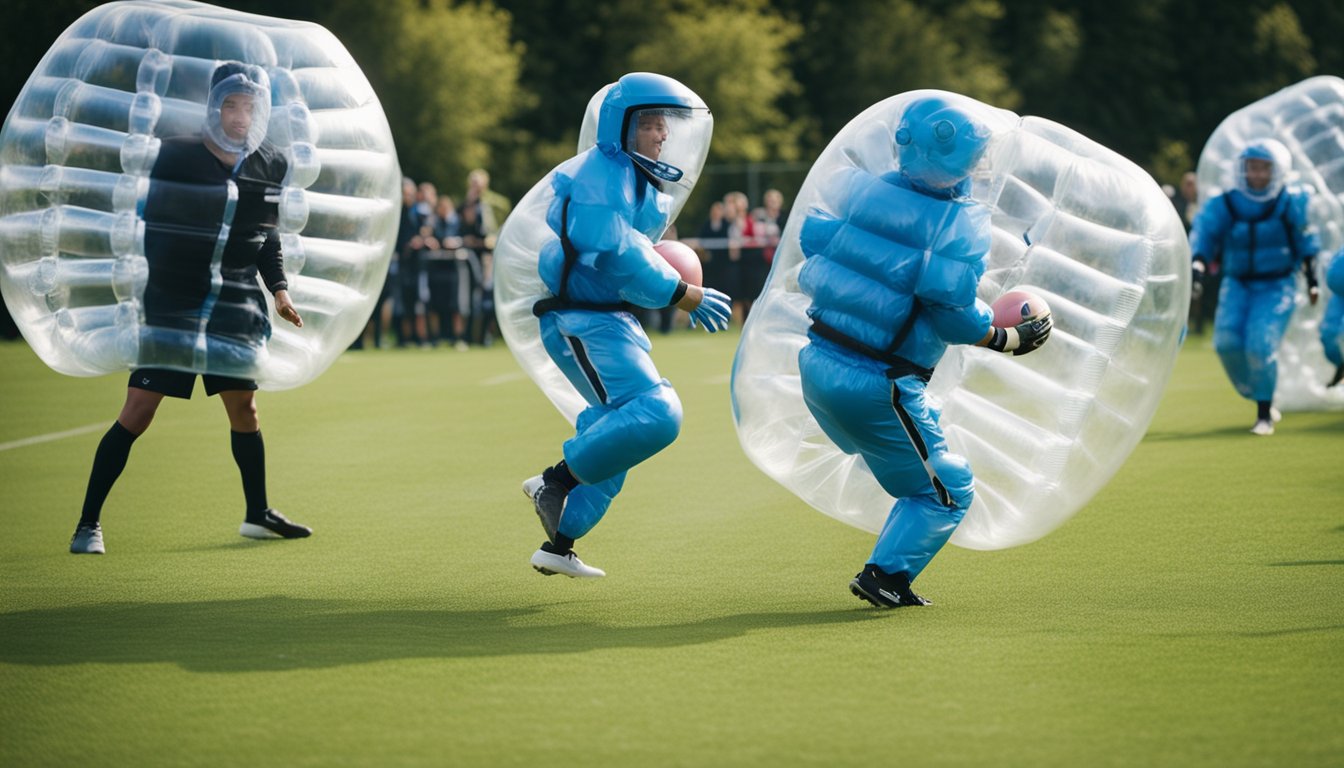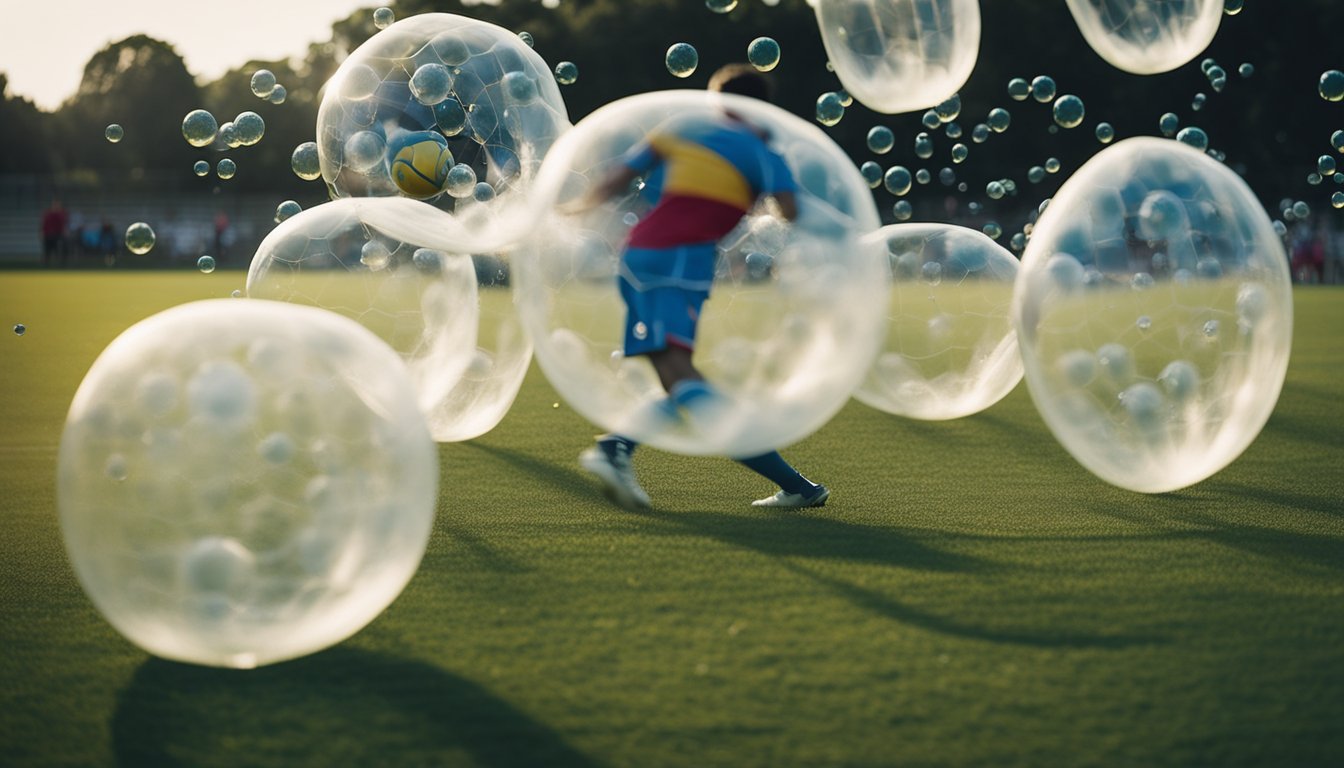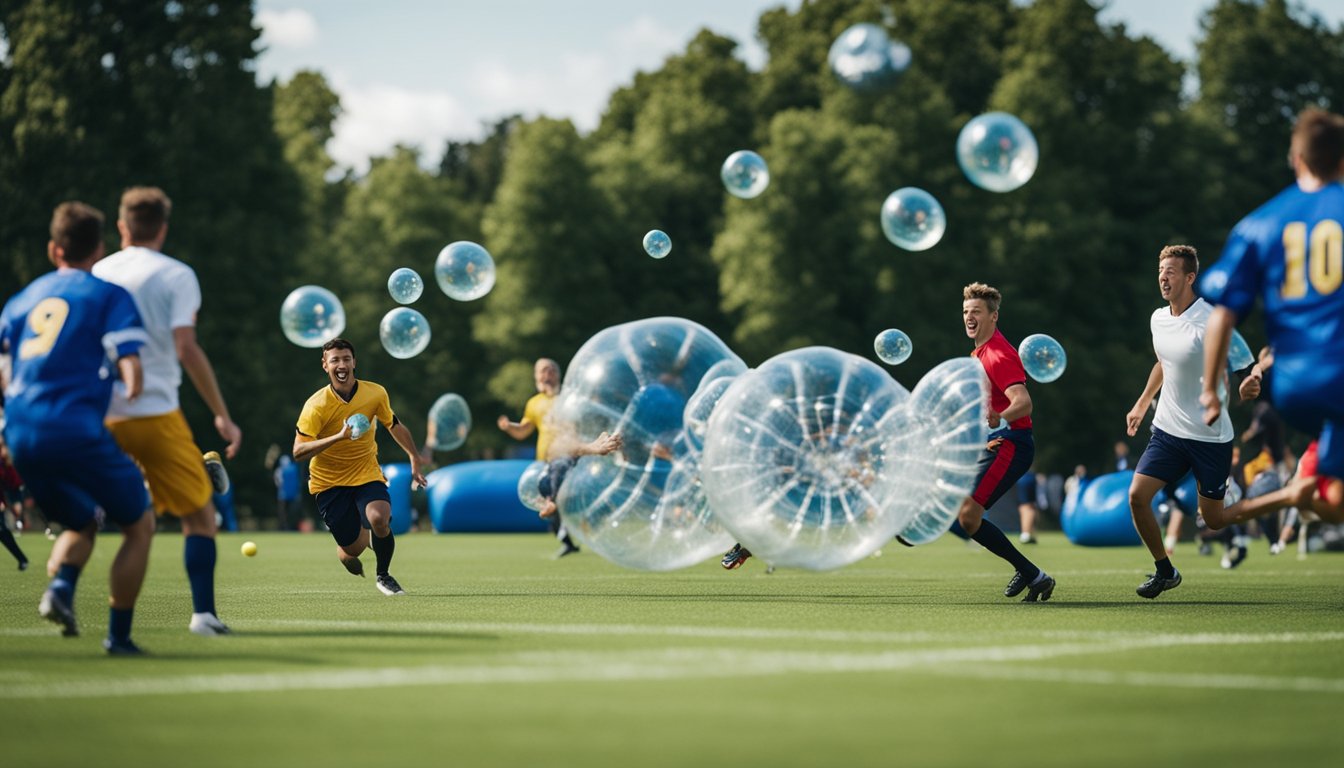Late updated: 27 Jun 2024 17:06
Written by: Emma Saunders
History And Evolution Of Bubble Football: From Humble Beginnings To Global Phenomenon
Bubble football, also known as bubble soccer or zorb football, is a dynamic and entertaining twist on the traditional game of football. Invented as a joke in Norway in 2011 by Henrik Elvestad and Johan Golden, it quickly evolved into a global phenomenon. Encased in large inflatable bubbles, players navigate the field with only their legs exposed, leading to hilarious collisions and a unique playing experience.

The sport saw a significant rise in popularity in 2014 when Lee Moseley recognised its potential and took it to new markets such as the UK, USA, and New Zealand. With the basic rules of football still applying, bubble football adds a thrilling element of unpredictability as players bounce off each other. This combination of traditional sport and innovative twist has hooked many enthusiasts.
Whether played indoors or outdoors, in competitive leagues or for fun, bubble football has carved out a niche for itself. Its rapid growth and the community it has built make it a fascinating topic for sports fans and casual players alike.
Key Takeaways
- Bubble football originated in Norway in 2011.
- Lee Moseley helped popularise it globally in 2014.
- The game combines standard football rules with contact inside inflated bubbles.
Origins and Development of Bubble Football
Bubble Football, also known as Bubble Soccer, began as a lighthearted idea before rapidly evolving into a popular sport with a global presence. Let's explore the key aspects of its inception and growth around the world.
Conception and Founders
Bubble Football originated in Norway in 2011. It was initially conceived by Henrik Elvestad and Johan Golden, hosts of the Norwegian comedy sports show Golden Goal. They introduced the idea as a humorous segment, where players competed while enclosed in inflatable bubbles. Little did they know, their playful invention would catch on.
The game’s simple design involves players wearing zorb-like bubbles covering their upper bodies. This allows for physical challenges and hilarity without serious injury. A video showcasing Bubble Football went viral on YouTube, sparking increased interest and participation worldwide.
Global Expansion
In 2014, Lee Moseley saw an opportunity to expand Bubble Football beyond Norway. He invested his own funds to promote and establish the sport in the UK, USA, and New Zealand. His efforts led to the sport gaining official standing and increased media coverage.
An appearance on the American TV show Shark Tank further popularised the sport in the United States. The internet, particularly YouTube and other social media platforms, played a vital role in spreading awareness. Videos of Bubble Football matches continue to attract millions of views, drawing new enthusiasts eager to experience this unique game.
Mechanics and Game Play

Bubble football combines the traditional elements of football with an added twist of players being encased in inflatable bubbles. This results in both a fun and competitive experience. Key aspects include the equipment used and specific rules that guide how the game is played.
Equipment and Safety
Players wear inflatable bubbles, also known as zorbs, which cover their upper body and head. These bubbles are designed to provide protection while allowing mobility.
The goal is to ensure fun while minimising injury risks. The bubbles are made of durable, transparent plastic. They come in various sizes to fit different players comfortably.
Safety is paramount. Players must wear safety gear, such as knee pads and mouth guards. Additionally, the playing surface, whether indoors or outdoors, should be free of hazards.
Rules and Objectives
The game follows similar rules to regular football but with some adjustments due to the inflatable bubbles. Teams typically consist of five to six players. The primary objective is to score goals in the opposing team's net.
Players use the upper body to bump into opponents, adding a dynamic twist to traditional play. Regular football rules like offsides are generally omitted for simplicity and fun.
Matches can be decided by the number of goals scored or through a golden goal in case of a tie. This structure keeps the game competitive while ensuring everyone has a great time.
Frequently Asked Questions

In this section, we address common questions about the history, evolution, and unique aspects of bubble football, along with its influence on recreational sports and related activities.
What are the origins of bubble football?
Bubble football, also known as bubble soccer, originated in Norway in 2011. It was initially a joke by Henrik Elvestad and Johan Golden. Their idea quickly evolved into a unique sport enjoyed worldwide.
How has the equipment for bubble football evolved since its inception?
Initially, players used basic inflatable bubbles for protection. Over time, these bubbles have improved in terms of durability, comfort, and safety. Modern bubbles often feature better materials, enhanced grip handles, and more secure harnesses.
What distinguishes bubble football from traditional football?
Bubble football combines elements of traditional football with the added twist of players being encased in large inflatable bubbles. These bubbles cover the upper body and head, resulting in frequent and safe collisions that are not part of traditional football.
In what way has bubble football influenced recreational sports?
Bubble football has paved the way for other novel sports that mix physical exercise with fun and safety. It has inspired activities like bubble bowling and bubble sumo, promoting an innovative approach to recreational sports.
What are the key rules that define a match of bubble football?
Similar to traditional football, bubble football involves two teams aiming to score goals. Key differences include the use of bubbles, which alters the dynamics of movement and tackling. The matches generally have shorter durations and may vary in the number of players per team.
Can bubble football be considered a variation of zorbing, and if so, how?
Yes, bubble football can be seen as a variation of zorbing. Both involve participants being inside inflatable spheres. While zorbing typically refers to rolling down hills, bubble football adapts the concept for use in competitive team sports on flat surfaces.
